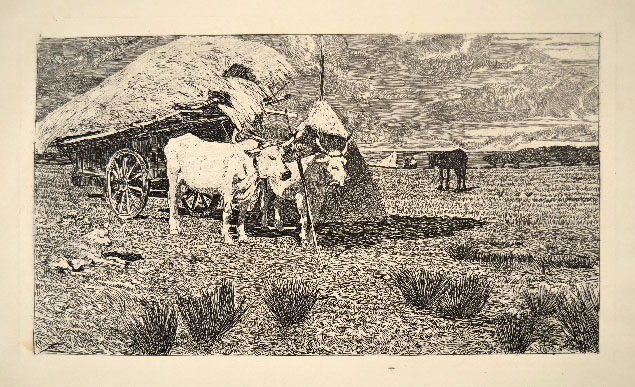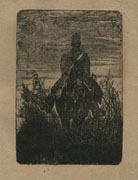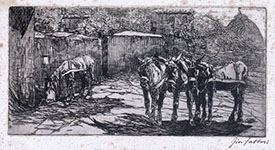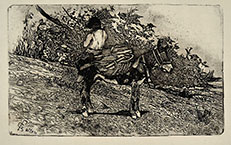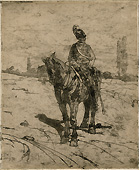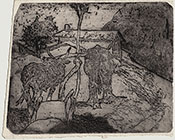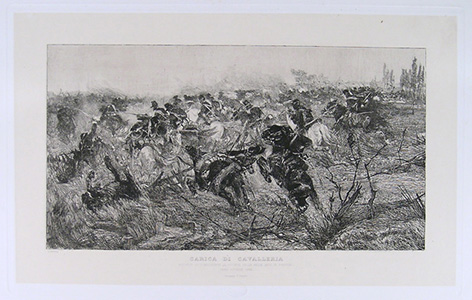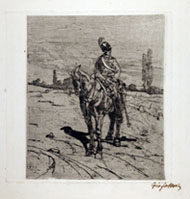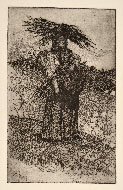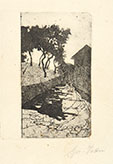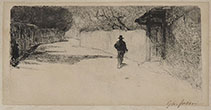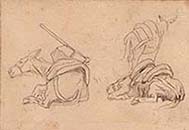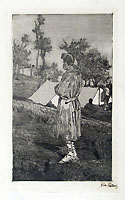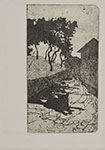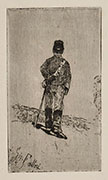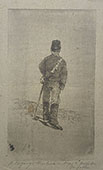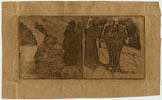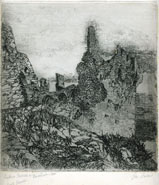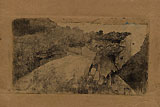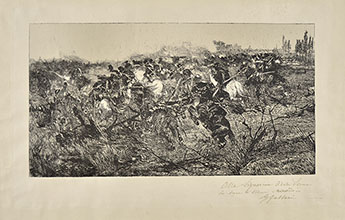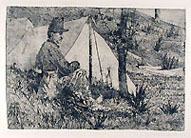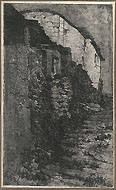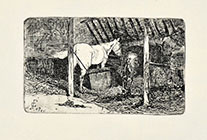(Livorno 1825 - Florence 1908)
BUOI AL CARRO (MAREMMA)
Etching on zinc, Baboni-Malesci CLXVI. Signed in the plate Fattori.
A fine impression pulled in black ink, during the Artist's lifetime, on a peculiar kind of ivory wove paper, thick and stiff, quite similar to modern coated paper. This kind of paper gives a particularly bright appearance to our impression. I directly compared our print with the very early impression, before the reduction of the plate, which is preserved in the Bertarelli collection, Milan (Mod. m. 20-2). Both the impressions show a similar fineness of the more lightly etched lines, as in the hay on the cart. The print has large margins. There are a few minor faults at the margins, including that, on the two smaller sides, the margin has been folded back for less than two centimeters. Generally the print is in very good condition.
PROVENANCE: originally part of a lot of Fattori's etchings coming from Majno family, sold at Finarte in March 1999.
Giovanni Fattori, possibly the most important painter of the nineteenth century in Italy, received his first instruction in drawing from a lesser painter of his native town. In 1846 Fattori moved to Florence to attend the Academy. During the 1850s Fattori joined the innovative artists, called Macchiaioli, who met at the Caffè Michelangelo in Florence and were champions of a new technique and style to contrast the conventional academic language. During those years, he still produced works that could be attributed to the historical-romantic school but his interest in studying from life also extended to landscape painting and the military life of the day became the subject of his first experiments in painting using the macchia technique. In 1867, after the death of his first wife, Fattori frequently stayed in the Maremma region which became the ideal backdrop for his works. Fattori began etching in the early 1880s, when he was nearly sixty; quite soon he was able to appreciate the difference of expression he could achieve using this new medium. A real peintre-graveur, he continued with etching his artistic research on light and essential shapes in reality.
